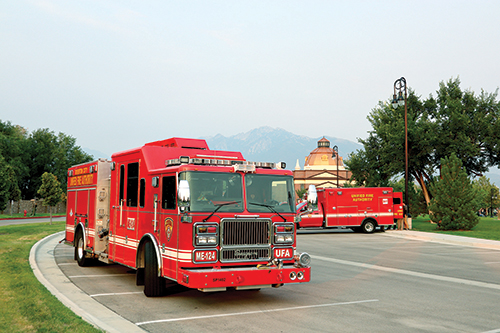 By Chief Wade Watkins
By Chief Wade Watkins
Today’s firefighters are “all-hazards” responders, providing emergency medical response, fire suppression, technical rescue, hazardous materials response, response to active shooter/hostile events, fire inspections, public education, investigation, community training and more. That “more” captures many of the things that are non-emergent in nature by definition. The firefighter community enjoys all aspects of the job.
However, when it comes to responding to the community’s emergency needs, firefighters are all business. In public you may notice that most, if not all, carry a mobile radio. This radio is a key piece of equipment not only to support communication but to give them situational awareness. This situational awareness is gained through monitoring what is happening throughout the Salt Lake Valley and elsewhere. Multiple channels are scanned and monitored. This ensures that if there is a developing incident, the firefighters can anticipate the need to respond as early as possible. The best way to capture this continual readiness from my perspective is describing it as “leaning forward.”
Leaning forward and monitoring the many incidents happening throughout the community is fatiguing to say the least. However, the value is lessening delay in response and getting emergency care and fire suppression where it needed. This is native in the first responder mindset as they understand seconds and even parts of seconds make a difference in outcomes.
Firefighters have data related performance measures that they continually try to improve. The most important, by virtue of being able to control it, is turnout time. Turnout time measures the time elapsed from when the emergency dispatcher informs the fire unit of an emergency to when the unit leaves the fire station. Often firefighters will be listening to the radio and/or visually monitoring the computer-aided dispatch (CAD) system to increase their respective effectiveness and efficiency. These habits support the other areas they try to control, which include quick zip boots, snapped shirts vs normal buttons, and every other efficiency they can come up with. If all the firefighters are not on the response unit, it can’t leave the station. So, you can imagine the social pressure there is to have a team approach to improving this time.
As the Riverton City liaison for Unified Fire Authority, I enjoy monitoring the response data to ensure that we’re responding to the community’s needs as effectively as possible. I am continually impressed with the firefighters with positive attitudes and desire to improve on each and every response who serve in Riverton City.
